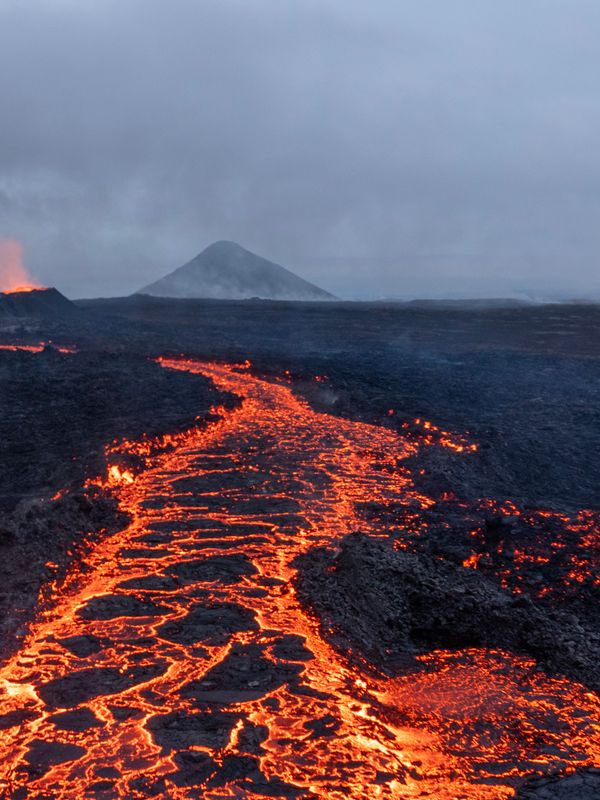
Icelandic Volcanoes: Everything You Need to Know
Have you ever wondered why Iceland has so many volcanoes? It’s all about where the island sits—right on the Mid-Atlantic Ridge between North America and Europe. Plus, there’s a hot spot beneath it that keeps the magma flowing. In this article, we’ll chat about what makes Iceland such a volcanic hotspot and why its landscape is shaped by all these awesome volcanoes.
The Geology of Iceland: Why Does Iceland Have So Many Volcanoes?
Iceland owes its existence to the powerful forces of volcanism, as it occupies a unique position directly atop the Mid-Atlantic Ridge. This means that Iceland straddles the boundary between the massive North American and Eurasian tectonic plates, and their slow movement is the cause behind the magma that feeds the volcanoes.
Tectonic plates encompass the Earth's crust and the uppermost layer of the mantle. Through the process of mantle convection currents, these plates can converge to form majestic mountains or diverge to create oceanic crust.
The North American and Eurasian plates are classified as divergent, which basically means that they are gradually moving apart from one another. As this happens, molten magma from the Earth’s mantle ascends to fill the void between them, resulting in the awe-inspiring spectacle of volcanic eruptions. This occurs along the length of the rift and can be observed in other volcanic island formations like the Azores and St. Helena.
In Iceland, you can even see the Mid-Atlantic Ridge as it rises above sea level. The most popular spots to see the rift are the Reykjanes Peninsula, Thingvellir National Park, and the enchanting Lake Myvatn Area. Of these three, Thingvellir is the most remarkable, where you can stand in the valley being created by the diverging plates. This ongoing separation between the plates causes the valley to widen by approximately one inch (2.5 centimeters) every year.
In addition to being situated on the Mid-Atlantic Ridge, Iceland is also positioned above a hot spot—a location in the Earth’s mantle with abnormally high magma activity. Examples of other renowned hot spots around the world include Yellowstone National Park and Hawaii.
A bonus to all this volcanic activity is the abundance of hot springs that are scattered across the country. Here’s a map of the best hot springs in Iceland.
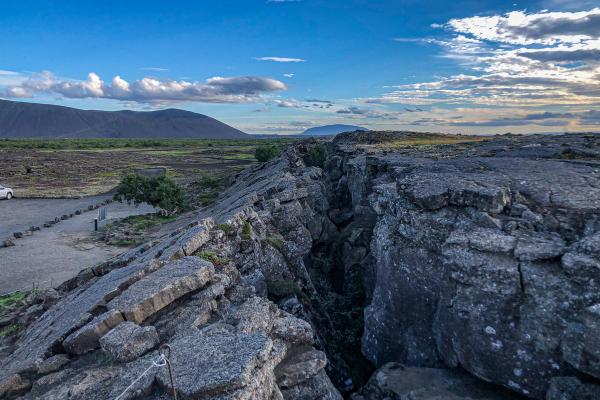
How Many Volcanoes Are There in Iceland?
Iceland boasts around 130 volcanoes, both active and inactive. However, the majority of these remain active, with the potential to erupt. These volcanoes are all contained within the 32 volcanic systems that run beneath Iceland.
The primary active volcanoes in Iceland align along a curved central line, running from the Reykjanes Peninsula through the Southern Highlands toward the Northwest area around Mývatn. Of all of Iceland’s volcanoes, Grímsvötn is the most active, located underneath the largest glacier in Europe, Vatnajökull. It last erupted in 2011.
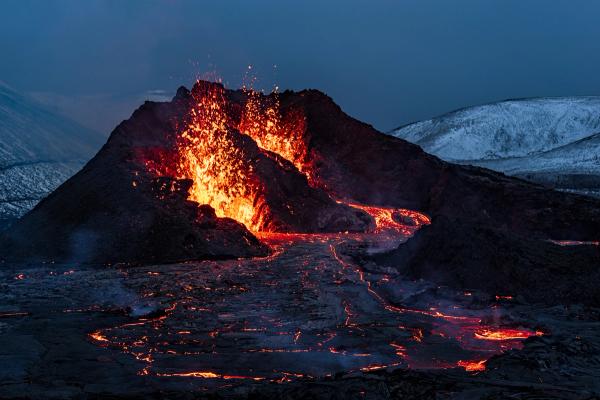
How Often Is There a Volcanic Eruption in Iceland?
Iceland's volcanic eruptions are both regular and unpredictable. Throughout the 19th century and up to the present day, barely a decade has passed without one. However, the timing of these eruptions follows no discernible pattern. Some happen in rapid succession, while others are spaced further apart.
The most recent well-documented eruption before the Fagradalsfjall volcano in 2021 and 2022 occurred in Iceland's Highlands in 2014. Located in the northwest corner of Vatnajökull, Holuhraun Volcano erupted, spewing forth lava and creating one of Iceland’s largest lava fields.
A bit further back, in 2011, the Grímsvötn volcano experienced a brief eruption. In 2010, the Eyjafjallajökull volcano beneath the icecap in South Iceland erupted, causing widespread travel disruptions and hitting news channels worldwide.
Iceland’s Most Famous Volcanoes
Iceland is home to approximately 130 volcanoes, but some are more famous and worth visiting than others.
1. Eyjafjallajökull
As previously mentioned, it was in 2010 when Eyjafjallajökull erupted in South Iceland, causing widespread flight cancellations in the US and Europe and bringing global attention to Iceland as a country. Since then, it has been one of the most famous Icelandic volcanoes.

2. Hekla Volcano
Renowned for near-relentless activity, Hekla volcano stands among the most prominent in Iceland. During the Middle Ages, this fiery giant earned the ominous title of "The Gateway to Hell" due to its frequent and explosive eruptions. Since Iceland’s settlement, Hekla has erupted and wreaked havoc on numerous occasions, unleashing colossal quantities of tephra with each eruption.
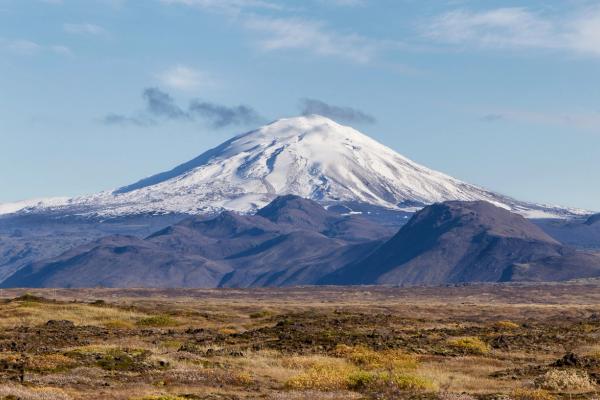
3. Katla Volcano
Katla volcano, nestled in South Iceland beneath Mýrdalsjökull glacier, stands as one of the most formidable and explosive volcanoes in Iceland. This is one of the volcanoes that is constantly exhibiting signs of unrest and has kept Iceland’s volcanologists on the edge of their seats for years now. Notorious for its immense ash clouds and catastrophic glacial floods, Katla has a fearsome reputation in Iceland. It’s also long overdue for an eruption.
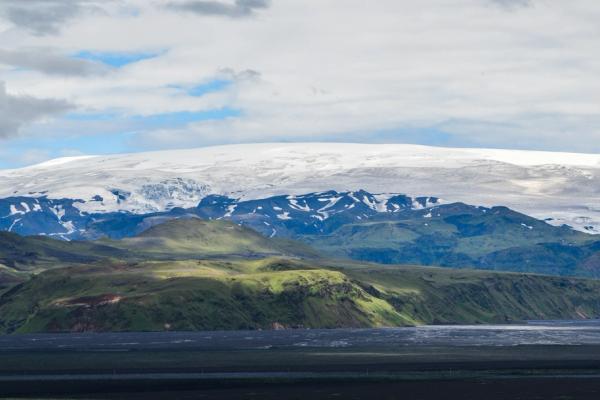
4. Snæfellsjökull Volcano
Sitting on the tip of the Snæfellsnes Peninsula, Snæfellsjökull volcano is one of Iceland's most cherished and frequently visited natural wonders. Its majestic presence serves as a captivating backdrop to the surrounding landscape and has earned it the status of a national park, celebrated for its extraordinary beauty.
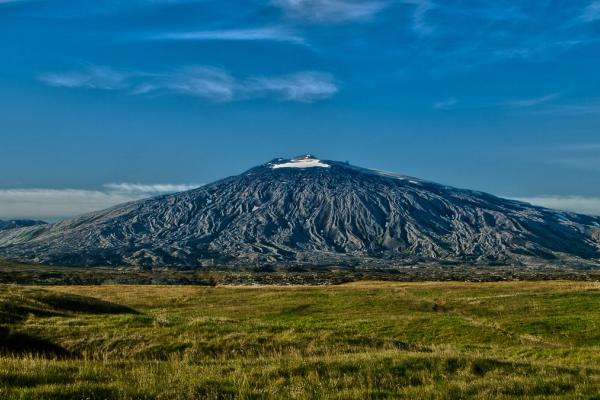
5. Krafla Volcano
Situated in North Iceland, Krafla volcano is one of Iceland’s highly active geological marvels, boasting an impressive record of 29 eruptions since the time of settlement. Notably, between 1975 and 1984, nine of these eruptions took place (now known as the Krafla Fires), highlighting the intense volatility of this volcanic powerhouse. Krafla is further renowned for its striking crater lake, known as Viti, where the water glows a frigid, milky blue.
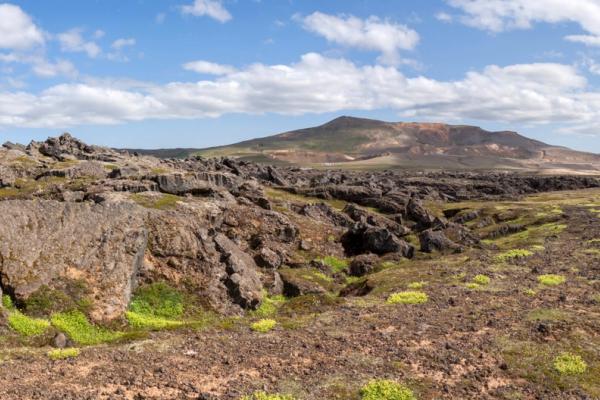
6. Hverfjall Volcano
One of the most popular volcanoes in Iceland is in the north, called Hverfjall. Located near the shores of Lake Mývatn, this volcano hasn’t erupted in around 4,500 years despite all the geothermal activity in the area. To visit it, it’s a quick detour from the road around the lake. From the parking area, you can climb the volcano for views over the vast crater of black sand, and even walk around the rim.
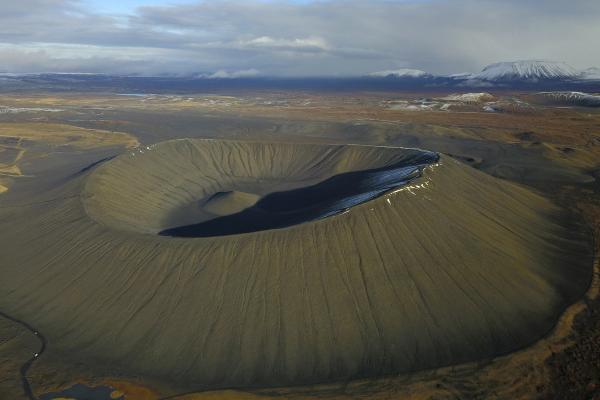
7. Grímsvötn
Nestled beneath the vast expanse of the southeast's Vatnajökull glacier, the Grímsvötn volcanic system asserts its position as Iceland's most exceptionally volatile. Concealed beneath the icy surface, its craters remain largely hidden from view. However, when an eruption occurs, the consequences are substantial and perilous, as evidenced by the immense ash clouds that ensue.
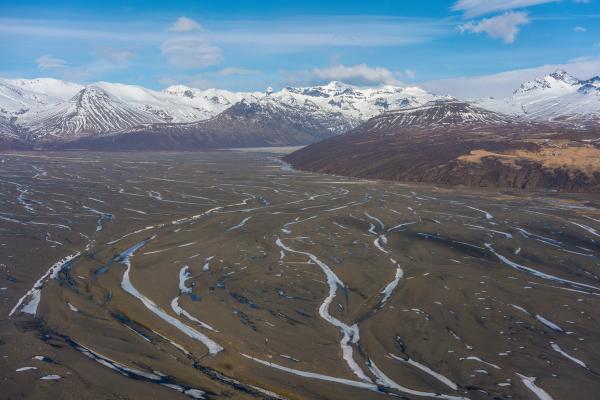
The 2021 and 2022 Fagradalsfjall Volcanic Eruption
Iceland’s most recent eruption occurred in 2022, when Fagradalsfjall Volcano erupted for the second time in two years on the Reykjanes Peninsula. This eruption was safe, and both Icelanders and visitors could hike to the volcano to witness the lava spewing out of it and slowly creeping down the valleys.
Will Fagradalsfjall Erupt Again?
It’s hard to say, but some scientists believe that an eruption here signals the beginning of a particularly active period of volcanic activity on the peninsula. This means that, yes, it could erupt again.
Iceland’s Biggest Volcanic Eruptions
Throughout history, there have been several monumental Icelandic volcanic eruptions, leaving huge marks on the landscape and collective memory of Icelanders. Here are a few of the biggest volcanic eruptions in Iceland:
- Eldgjá (sometime in the 930s): Known as the "Fire Canyon," the Eldgjá volcano (connected to Katla Volcano) erupted in the 10th century, causing one of the largest lava flows in the country and altering the topography of the southern region.
- Hekla (1104): The eruption of Hekla volcano in 1104 stands as one of Iceland's most powerful volcanic events, leaving a lasting impact on the surrounding environment.
- Laki (1783-1784): The Laki eruption unleashed a catastrophic flood of lava and toxic gases, which had a devastating impact on Iceland and beyond and had far-reaching consequences for climate and agriculture.
- Askja (1875): The eruption of Askja volcano caused widespread destruction and created a massive caldera, altering the landscape and leaving a strikingly beautiful volcanic lake in its wake.
- Katla (1918): The Katla eruption released an enormous ash cloud, disrupting air travel and affecting the local environment. It served as a reminder of the raw power held within this iconic Icelandic volcano.
Volcano Tourism
From lava tunnels to hiking up to volcanic rims, experiencing the volcanoes in Iceland is one of the best ways to understand the immense power brooding beneath the country’s surface.
We’ve covered how best to experience Iceland’s volcanoes on your campervan trip in this article about the best volcanic experiences in Iceland.
Conclusion
Iceland’s volcanoes are something else. They’ve shaped the island into the wild, otherworldly place it is today. Whether you’re hiking around a crater or checking out lava fields, you can really feel the power of nature here. If you’re visiting, definitely make time to explore a volcano or two—it’s an experience you won’t forget.
